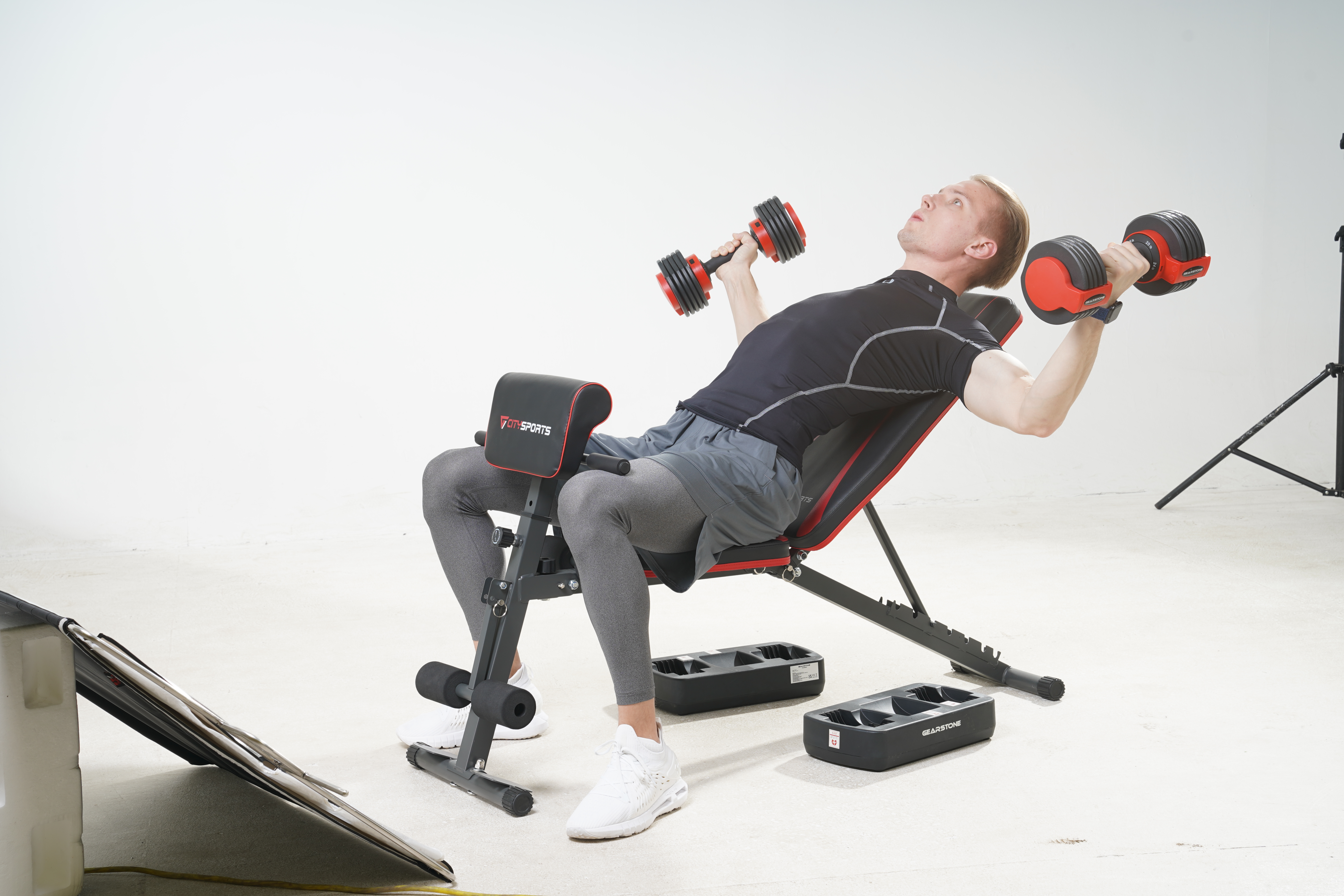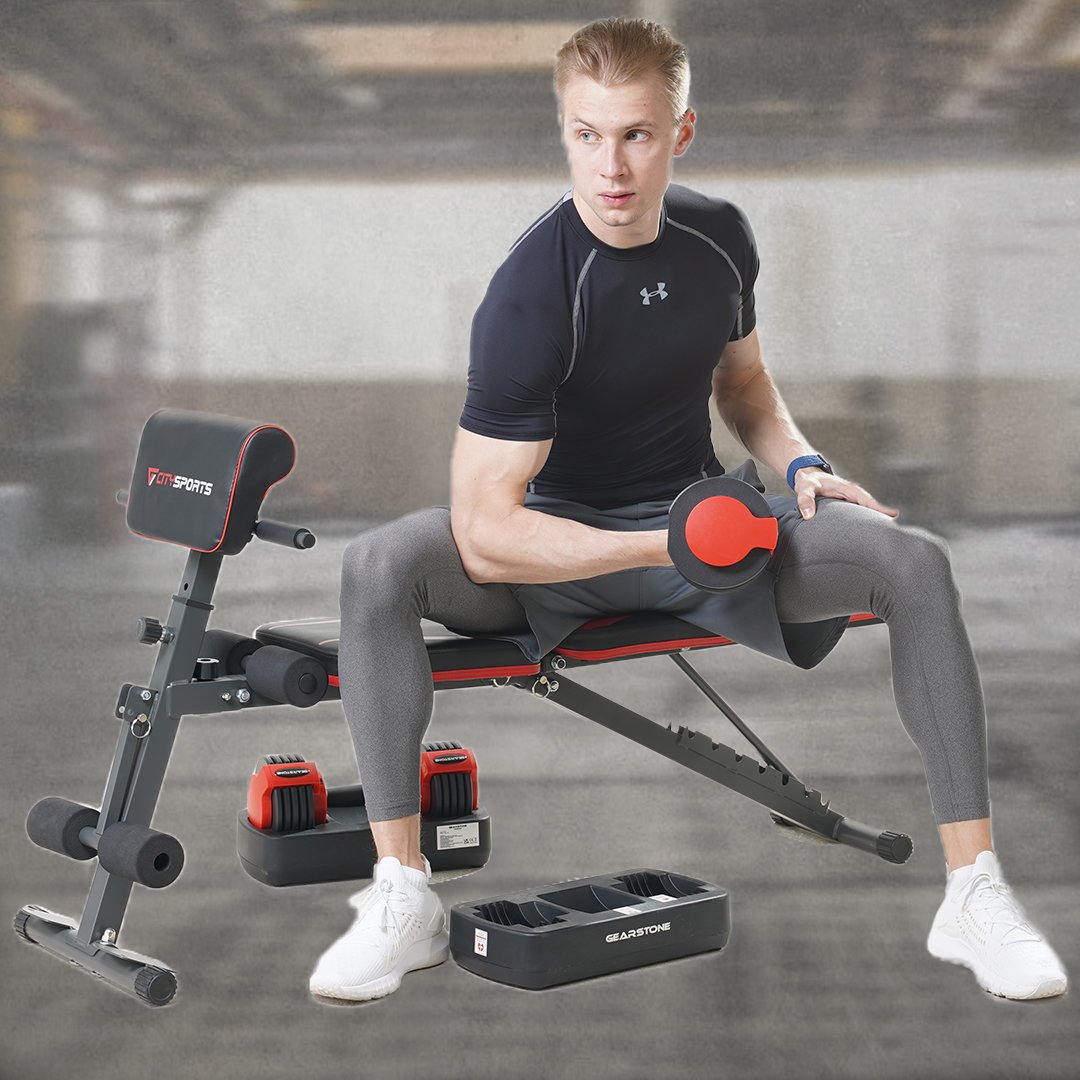Building a big chest means developing your pecs as fully as you can. To achieve this, you need to use angles. Both incline and decline bench press help craft powerful pecs, as they access different parts of your muscles.
The pectoral muscles are comprised of the Pectoralis Major and the Pectoralis Minor. The ‘Major’ is the larger muscle and the minor is a smaller, triangular one underneath.
Both cannot be trained with a standard bench alone, whereas adding incline and decline bench can access different muscle fibers to help train your pecs. Higher angles can put a strain on your shoulders – so take care and find the one that puts the least stress on them.
Incline Bench Press
CITYSPORTS FID Weight Bench S1 & GEARSTONE Adjustable Dumbbell YL11
An incline bench press is a must-have to include in your routine. By adjusting your angle to sit more upright, you can hit your upper pecs in a way other exercises cannot match. Lifting your arms overhead shortens the clavicular portion of your pec, which means that a larger incline places more stress on the head of your pec and on your deltoids.
While you'll usually have to reduce the weight compared to your flat bench, it's a must-have inclusion for serious bench enthusiasts.
Getting the right incline bench press angle
For a barbell bench press, you'll need a squat rack with an adjustable bench in it. Set up the bench at an upright angle of around 15-30 degrees. Any higher can risk targeting the wrong muscles and strain your shoulders, though there are people who swear by 45 degrees.
You'll have to experiment to see what feels right. Generally, you'll only need to raise the bench a couple of notches depending on how spaced out they are.
It's important to not angle it too high up, as increasing the angle too much will target your shoulders and you'll basically be performing an overhead press.
Remember, your incline bench press angle will depend on what feels right for you. De-load the bar and practice, you'll be able to feel the strain in either your upper chest or shoulders.
Using Inclines in your workout
You can use dumbbells to extend the range of motion and really target your chest. Mixing up the angles as you work through sets can leave you feeling pumped.
Example sets (add these to your chest day):
- 3 x 8-12 Incline Barbell Bench Press
- 3 x 10 Incline Dumbbell Bench Press
Tips: Adjust the bench each set between comfortable ranges, i.e 15 degrees, 30 degrees, 45degrees
Decline Bench Press
Just as incline trains your upper pecs, decline trains the central and lower pec. Unlike the incline, which puts pressure on your shoulder joints and deltoids, the decline bench focuses mainly on your chest.

Decline Dumbbell Press
Never, ever use ‘false grip’ when doing declines. If the bar drops from your hands it may land on your neck.
Getting a good decline bench press angle
Popular with bodybuilders like Ronnie Coleman, the decline bench is best done on an actual decline bench. That’s the one you often see people doing sit-ups on. As such, your angle is generally set by the bench itself.
Sit down on it, hook your legs under the end of the bench and lay down. Have a spotter pass you the bar if you’re away from a rack or unload it yourself. Keep a medium-width grip so that you’ll have a 90-degree angle between your forearms and biceps when you’re in the middle of the movement.
On an adjustable decline bench, you’ll need to experiment with what feels right for you. If it places lots of pressure on your shoulders, try adjusting until it’s comfortable.
Using declines in your workout
You can perform declines with either a barbell or dumbbells. If you don’t have a spotter, dumbbells are the safer option and also offer a wider range of motion. An adjustable dumbbell could meet your needs of different periods, it’s easy to store with a base comes with.
Like inclines, you can do both dumbbell and barbell decline press to maximize chest growth.
CHEST WORKOUT WITH A FULL RANGE OF ANGLES
If you have an adjustable weight bench, adjust to the various angles and exercises together to blast your chest and build a fearsome set of pecs.
- 3 x 8-12 flat barbell bench press
- 3 x 10 barbell incline bench press
- 3 x 10 dumbbell decline bench press
- 3 x 8 incline dumbbell bench press (Use heavier dumbbells and vary angles throughout 15, 30 and 45 degrees)
Home Gym Must Have



